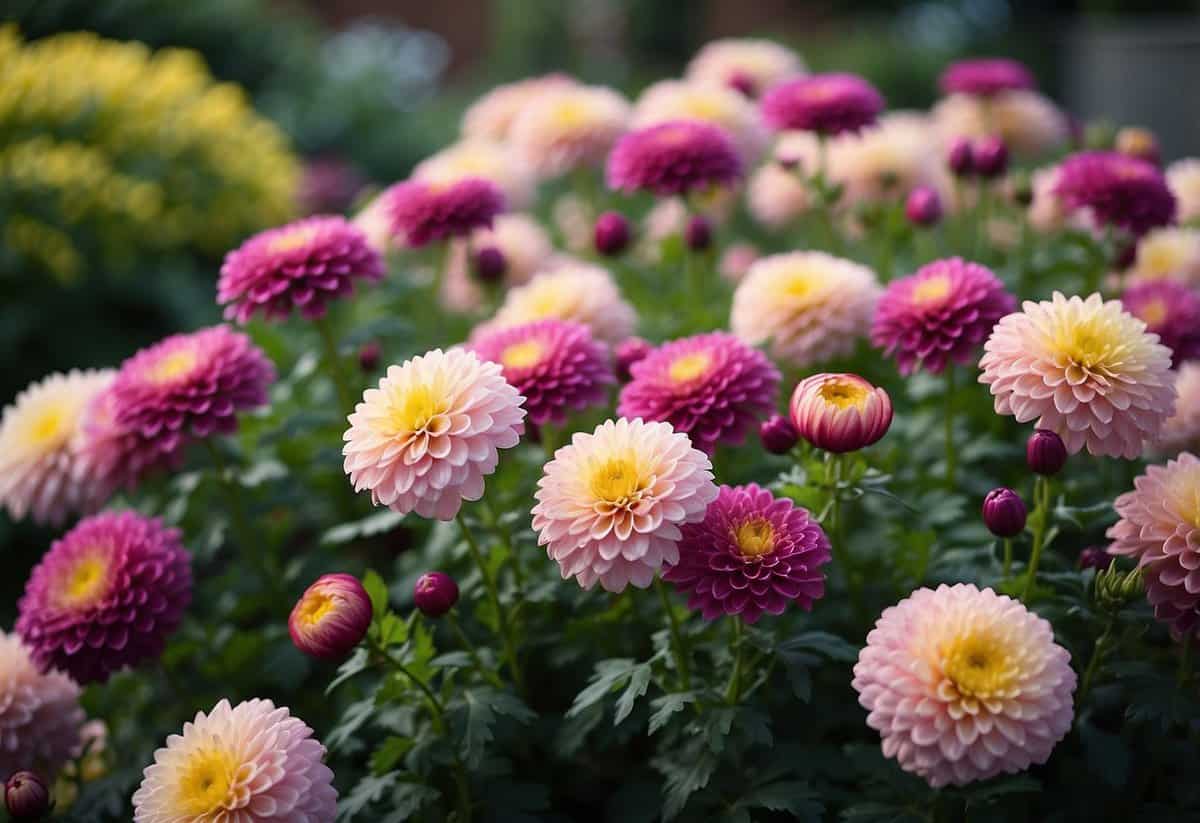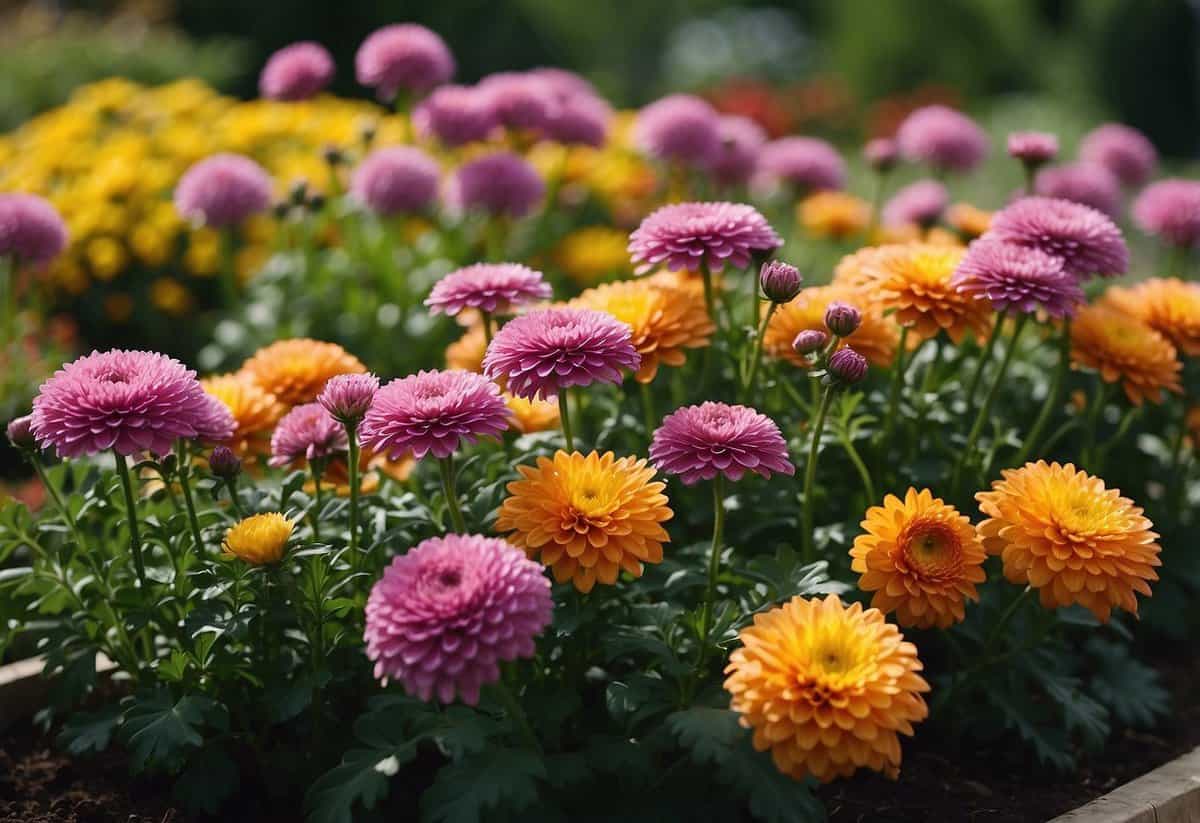Garden Mums Tips: Easy Tricks for Stunning Blooms
Garden mums, often referred to as chrysanthemums, are a favorite among fall gardeners. These colorful flowers can brighten up any garden with their vibrant hues and variety of shapes. Easy to grow and care for, mums are a great choice for both beginners and experienced gardeners alike.

Do you want your garden to bloom beautifully from late summer through fall? Mums might be just what you need. With the right tips and care, you can enjoy these stunning flowers for weeks on end. Whether you’re planting them in your garden or keeping them in pots, mums bring a touch of autumn charm to any space.
1) Choose the Right Variety

When picking mums for your garden, think about your climate. Most varieties are hardy in Zones 5 through 9. Some can even thrive in lower zones.
Consider your garden’s look and feel. Mums come in many colors, heights, and bloom times. Research different types to match your gardening goals. Tips for choosing mum varieties.
Ask local nurseries for advice. They’ll know which variety works best in your area. This helps you enjoy beautiful blooms year after year.
2) Plant in Well-Drained Soil

Garden mums thrive best in well-drained soil. This helps prevent water from sitting around their roots, which can cause rot.
Choose a spot with soil that drains easily. Avoid areas where water stands after rain.
You can improve drainage by mixing coarse sand or perlite into your garden soil. For containers, use a high-quality potting mix.
3) Water Regularly

Mums need regular watering to thrive. Check the soil daily and water when the top 1 to 2 inches feel dry.
It’s best to water mums early in the morning. This helps the plants absorb water throughout the day.
Avoid watering from above to keep the foliage dry. Aim to water the base of the plant to reduce the risk of disease.
For more detailed tips, check out watering mums.
4) Provide Full Sun

Garden mums thrive best when they receive full sun. Aim for at least six hours of direct sunlight each day.
Choose a sunny spot in your garden to plant them. Mums love sunlight and this helps them grow strong and healthy.
Remember to water them well, as full sun can dry out the soil faster. Keep an eye on soil moisture and water regularly.
Proper light ensures your mums stay vibrant and beautiful for a longer time.
5) Use Mulch to Retain Moisture

Mulch is great for keeping garden mums hydrated. It helps the soil retain moisture, so you don’t have to water them as often.
Adding mulch around your mums also reduces weed growth, which competes for water.
For the best results, apply a 3-inch layer of mulch around your mums. This will keep the soil cool and moist, promoting healthier plants.
6) Fertilize Monthly

You should fertilize your garden mums once a month to keep them healthy. Use a balanced fertilizer, such as one with a 6-2-4 or 4-2-3 ratio.
Apply the fertilizer at a rate of 1 pound per 100 square feet of garden bed. This will help your mums grow strong and vibrant.
To make it easy, consider using a granular fertilizer that releases nutrients slowly over time. This way, your mums get a steady supply of food.
For more details, you can check out fertilizing mums for tips and tricks.
7) Pinch Back for Bushier Growth

To make your garden mums bushier, pinch back the tips of the plants when they reach about 6 inches tall.
Use your thumb and forefinger to gently remove the top inch of growth. This encourages more side shoots.
Repeat this process every two to three weeks until early August. This helps your mums develop a fuller shape and more blooms for the fall. For more details, check this guide.
8) Protect from Frost

To keep your garden mums safe from frost, it’s essential to take some precautions.
Mums can survive a light frost, but temperatures below 25°F can damage or kill them. Cover your mums with a light blanket or sheet at night to provide insulation and keep them warm.
Consider keeping your mums in containers. This allows you to move them indoors when frost is expected, giving them extra protection.
9) Deadhead Faded Blooms

To keep your garden mums looking their best, you need to deadhead faded blooms regularly.
Start deadheading in early summer and continue until late summer or early fall. Use your fingernails or garden snips to cut about two inches below the flower head. This helps the plant stay healthy and look good.
Regular deadheading encourages the growth of new flowers. This means your mums will keep blooming, adding vibrant color to your garden throughout the season.
10) Space Plants Adequately

When planting garden mums, it’s important to give them enough room to grow. If you’re growing mums to be 6 inches wide, space them 6 inches apart.
This spacing helps each plant get the sunlight and air it needs. It also reduces the risk of diseases. For best results, remember to keep plants from crowding each other.
Taking the time to properly space your plants will lead to healthier mums and a more beautiful garden.
Understanding Garden Mums

Garden mums are beloved for their vibrant colors and resilience. They come in various types and exhibit unique growth patterns.
Types of Garden Mums
Garden mums, also known as Chrysanthemums, come in many varieties, each with distinct colors and shapes.
Daisy Mums have a classic daisy-like appearance with a yellow center and colorful petals. These are often used in bouquets.
Cushion Mums are usually low-growing with many branches, making them look like cushions of flowers. They often cover garden beds beautifully.
Spider Mums have long, thin petals that give them a unique, spidery look. These can add an exotic touch to your garden.
Pompon Mums have small, button-like blooms that are both charming and easy to maintain. They work well in both garden beds and containers.
All these types thrive in full sun and need regular watering to stay healthy.
Growth Patterns
Garden mums have distinct growth patterns that make them easy to cultivate.
Height and Spread: Most garden mums grow to be about 1 to 3 feet tall. They can spread out to fill spaces in your garden, which is great for coverage.
Flowering: These plants typically bloom in late summer to fall, providing a splash of color when other flowers start to fade.
Maintenance: Regular pinching back of the stems in early summer encourages bushier growth and more blooms.
Watering Needs: Garden mums like moist, well-drained soil. They generally need about one inch of water per week. Avoid letting the soil dry out completely to prevent wilting.
Understanding these growth patterns can help you care for your garden mums more effectively.
Planting and Care Tips

Garden mums, also known as chrysanthemums, need proper soil, watering, and timing to thrive. These tips will help keep your mums healthy and blooming.
Ideal Soil Conditions
For the best results, plant your garden mums in well-drained soil. Mums prefer soil types such as loam, clay, or sand. If you are using containers, mix 1 part good quality potting soil, 1 part coarse sand or another draining material, and 1 part peat moss or coco coir. This combination provides the right balance between moisture retention and drainage. Aim for soil that is slightly acidic to neutral in pH, around 6.0 to 7.0.
Watering Guidelines
Watering is crucial for garden mums. When you first plant them, give them a good soak to help establish their roots. After that, it’s important to keep the soil consistently moist. Check the top of the soil, and if it feels dry, water your plants. During hot weather, you may need to water more frequently. Mums generally need deep watering about two or three times a week. Avoid letting the soil dry out completely between waterings to keep them healthy.
Best Planting Seasons
The best times to plant garden mums are in early spring or early fall. Planting in early spring allows the mums to establish a strong root system before the hot summer months. If you plant in early fall, ensure it’s at least six weeks before the first expected frost. This timing helps mums adjust and settle into their new environment. Whether you are planting mums in beds, borders, or containers, make sure to choose the optimal season for the best growth and flowering potential.







